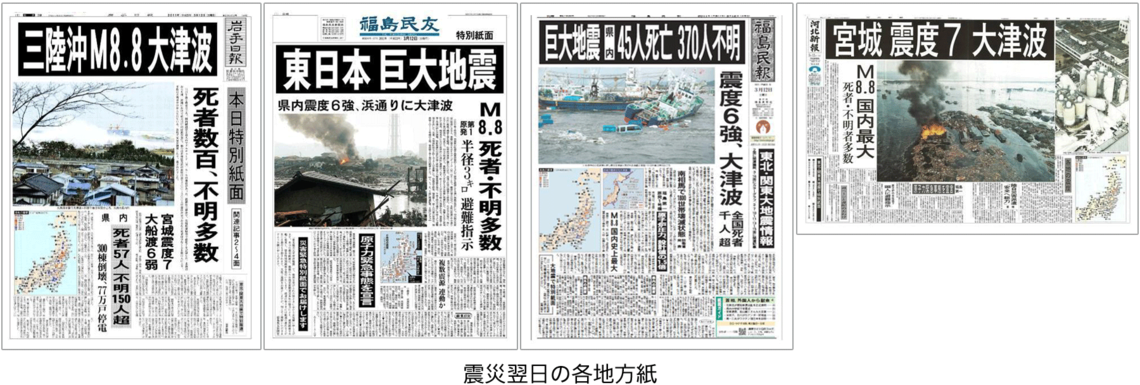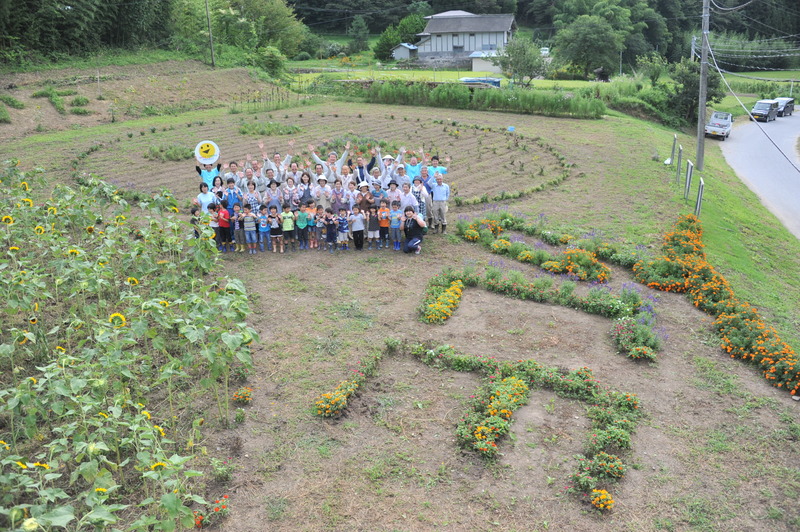Slowly, but Steadily
~Connecting, Communicating, and Continuing What Matters~
Activities of the Tohoku Recovery Support Network
It will soon be three years since the Great East Japan Earthquake. Immediately after the disaster, newspapers implemented special reporting systems. The fact that newspapers were delivered daily without fail, even to the disaster areas, deeply moved people. In the subsequent recovery phase, newspapers became an accurate, neutral, and reliable source of information amidst the confusion.

Our Tohoku Recovery Support Network (*) has now been active in the disaster areas for over two and a half years. We are deeply grateful for the support of local media representatives, Dentsu East Japan Inc. members, and many others. Having been part of Media Services / Newspaper Division myself until last year, our activities have centered on collaboration with newspapers. We've made steady progress through trial and error, working closely not only with newspaper sales teams but also with colleagues from editorial, business development, sales, and many other departments.
※About the Tohoku Recovery Support Network: Following the Great East Japan Earthquake on March 11, 2011, Dentsu Inc. internally explored how its core business could support recovery efforts locally. This led to the launch of a cross-functional virtual project team in August of that year. Currently, with the MC Planning Bureau Area Solutions Department as the core unit, the team consists of six members including staff from the Radio, Television & Entertainment Bureau and the 15th Sales Bureau. Collaborating with relevant departments within Dentsu Inc. and Dentsu East Japan Inc., the team is primarily active in the three prefectures of Iwate, Miyagi, and Fukushima. Over the two and a half years since its launch, the team's activities have been diverse, including reconstruction-related projects with local governments and central ministries, reconstruction events in collaboration with local media, and reconstruction support for local private companies.
 |
 |
The "Smile Tohoku Project" by the Fukushima Minpo, Iwate Nippo, and Kahoku Shimpo newspapers
began with the newspapers' desire to "bring smiles to people's faces by creating flower fields together with local residents."
|
Now, as was the case with the Great Hanshin-Awaji Earthquake, the three-year mark after a disaster is often said to be a significant turning point in many ways. It is certainly a time when recovery efforts, such as debris removal and infrastructure rebuilding, reach a certain milestone, and residents begin to process their emotions, aim for self-reliance, and start looking forward. However, in this case, the situation is different for Fukushima Prefecture alone. The delays in recovery and reconstruction caused not by the earthquake or tsunami, but by the nuclear accident, are incomparable to those in Miyagi or Iwate Prefectures. Furthermore, two winds—the fading of memory and unfounded rumors—have blown through, widening the gap even further.
It's not just disparities between prefectures. Speaking with local residents, I sense a growing polarization: some are shifting their focus, looking ahead, and taking action, while others remain trapped in the shadow of the disaster, struggling and suffering. This is my personal opinion, but I don't think telling those who are struggling and suffering to "hang in there!" resonates deeply with them. Rather, I believe it's crucial to create and sustain a flow where we further support and highlight those who have started taking action, sharing their stories. This can gradually increase the number of people who think, "If that person is doing their best, I need to do my best too."
 |
The progress of the Sanriku Railway restoration
|
Next week on 3.11, memorial services and events will be held in each municipality and prefecture. We will assist with projects organized by local governments and newspapers. Notably, Miyagi Prefecture has designated 3.11 as "Miyagi Memorial Day" starting this year, with schools generally closed. This is to make it easier for students to participate in memorial services. Of course, there are many things we must never forget. However, we hope to work alongside newspapers to help position 3.11 not just as a day of remembrance, but as a kickoff point – a day to connect what we feel and learn from it to the next step, creating a new Tohoku.
Next time, I will report on the situation on March 11th directly from the region. I expect there will be differences depending on the prefecture and the individual. I will strive to convey these realities.
(MCP Bureau Area Solutions Department, Tohoku Recovery Support Network Sendai Representative, Yasuhiro Kitade)





